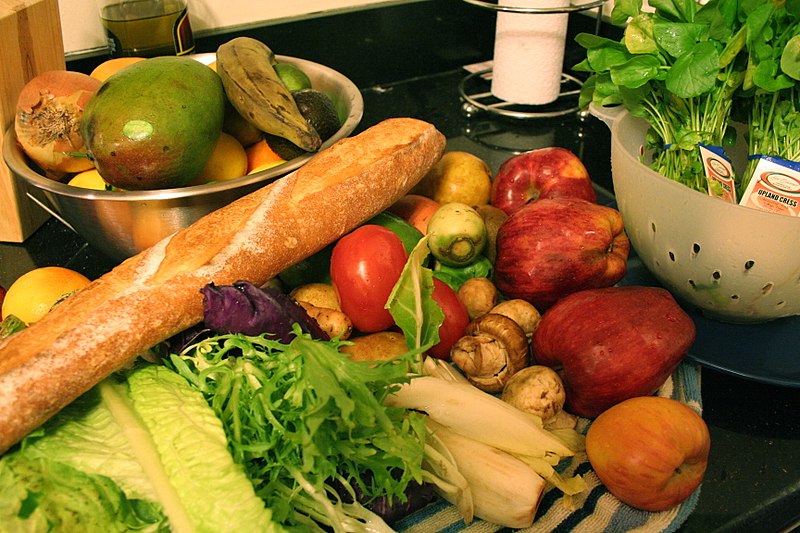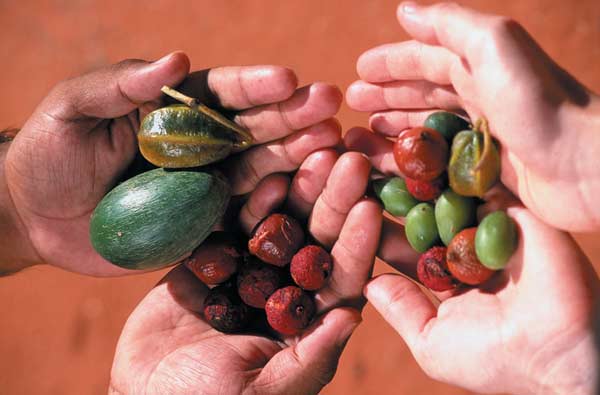If you live in an urban environment, fresh fruits, vegetables, and herbs are something that you usually buy at grocery stores, markets, and supermarkets. Most of us have a mindset that farmers sell their crops to suppliers. Then, the suppliers will transport the produce to cities, and we will buy them wrapped in plastic on the shelves of a store near us. But has it ever crossed your mind that the plants and trees lining the sidewalk of your city might be helpful and delicious? And most importantly, they are free.
The act of searching and harvesting edible wild plants is called foraging. In recent years, there has been a growing foraging movement, which has drawn attention to the abundance of edible plants even in the most seemingly food-bare environments. But you don’t really need to be in the bush to be able to forage for your dinner, because you can go urban foraging.
Urban foraging is the act of gathering wild food growing in the suburbs and cityscape. This includes edible weeds, ornaments, and as well as native plants. This means that if you know how urban foraging works, then you can find free food on your morning walk, or on your way home from work.
If you want to try urban foraging, you’re in the right place. It’s because we are here to give you some of the best tips for urban foraging.
Get to Know the Native Plants in Your Place
Before you go outside for urban foraging, the first thing you can do is to get to know the native plants in your place. Focusing on what is already growing around will make it easy for you to find them, depending on the season.
For example, in North America, there’s an abundance of dandelions. For some people, this plant is considered to be a weed. But did you know that it is an entirely edible plant? Yes, every part of it, including its root, flower, stem, and leaves, can be used for sustenance. Its greens are rich in vitamins A and C, and it is packed with antioxidants as well. In fact, many creative chefs have used the leaves of dandelions in quesadillas and fresh salads. The Dandelion flower, on the other hand, can be used to make wine, which is known to be good for the kidneys.
The availability of edible plants depends on your city, but it’s certain that there’s an incredibly wide and diverse array of plants everywhere that you can find. Some of them can be chives, berries, acorns, roses, amaranth, clover, bamboo, spruce tips, crab apple, and more. You just simply need to pay attention to the corners and edges of your urban environment.
When foraging, it’s important to remember to forage only from plants with enough vegetation to maintain their growth after you’ve harvested some. It’s also great to forage in the morning before the plants’ flowers blossom.
Always Think of Safety First All the Time
Foraging might sound easy because you can simply walk out of your house and start recognizing plants using a plant identification app on your smartphone. However, you should not take urban foraging lightly. Yes, there are lots of friendly plants and trees that line the streets. But keep in mind that there are also dangerous ones out there that can lead to violent illness and even death when eaten.
Even edible plants can be dangerous sometimes because there are wrong parts to them. For example, the petals of a certain plant might be edible, but the roots can be dangerous. Therefore, when foraging, you need to be absolutely certain about the plants. If you have doubts, it’s better to not eat it.
It’s also great if you can memorize the Latin names of the plants that you are foraging. It’s because traditional names of some plants are sometimes mixed up with other more dangerous variations. You also need to avoid plants that look unhealthy. Make sure to wash and clean any produce you’ve foraged before you eat them.
Check Your Environment
Aside from understanding the safe and unsafe plants when foraging, another thing you need to consider is the location of the plants. You need to check the soil where you are foraging. If there’s a nearby water source, see what’s in the water. You also need to know if the area of the plants is sprayed with an herbicide that is dangerous to ingest.
These things might be difficult to know instantly, but with proper research, you will be able to educate yourself. If you are new in your place, you can simply talk to your neighbors and see what they think about the place where the plants are growing. You can also get some soil and send them for testing. Knowing the history of your area may have an effect on the present plants that grow around you. One of the best rules you can follow is to avoid foraging plants that grow near gas stations, busy roads, factories, industrial plants, train tracks, and auto shops.
Consult with Foraging Experts
The internet can teach you a lot of foraging edible plants. But as you continue to learn, connecting with experts is still the best way for you to learn more about different plants and foraging techniques. You can visit your local library to find some plant identification books. You can also sign up for urban foraging classes in nearby nature centers. Urban foraging is now gaining popularity in lots of cities around the world. Therefore, there’s a great chance that there’s an expert in your region who can teach you about the plants in your area.
Urban foraging is indeed a great way to discover lots of tasty and healthy plants out there that you can get for free. Aside from that, it is also a wonderful way of reconnecting with nature, and as well as in shrinking your carbon footprint. Urban foraging will open doors to new and interesting foods that you can add to your diet. It will make the green spaces in your city look like an exciting adventure instead of just a background and decoration.


